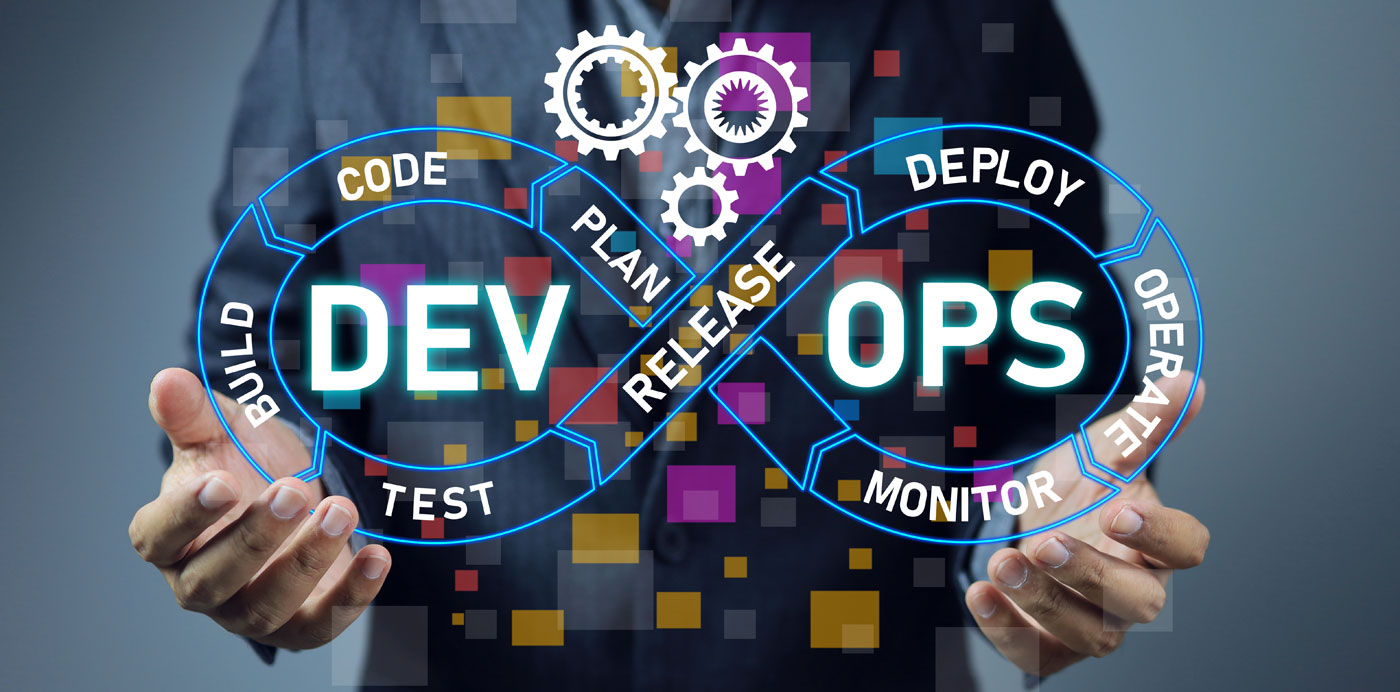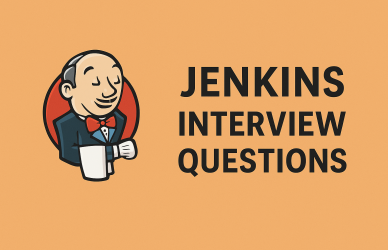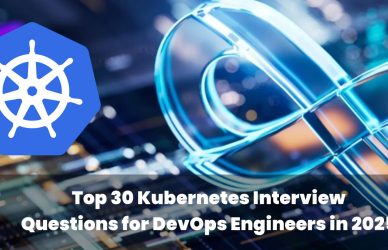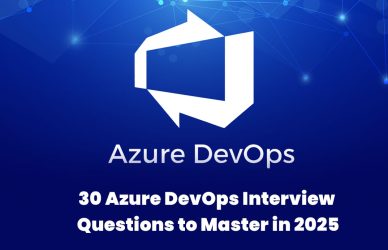This in-depth guide is tailored for DevOps professionals preparing for CI/CD interviews in 2025. Covering tools like Jenkins, GitHub Actions, and Azure DevOps, it features real commands, optimization tips, a sample Jenkinsfile, and a downloadable pipeline flowchart.
SEO Focus: Optimized for the keyword “DevOps pipeline interview”, with links to active job listings at CloudDevOpsJobs.com. Ideal for sharing on LinkedIn using #DevOps.
Introduction: Why CI/CD Is Core to DevOps in 2025
In 2025, CI/CD pipelines are the backbone of modern DevOps. Whether you’re deploying microservices, automating infrastructure, or streamlining testing, your expertise in CI/CD workflows defines your success.
This guide features:
- Top 25 CI/CD Interview Questions & Answers
- Sample
Jenkinsfile - CI/CD Flowchart
- Expert Tips for Real Interviews
Section 1: CI/CD Basics and Core Concepts
1. What is CI/CD?
- CI (Continuous Integration): Automatically integrates code and runs tests.
- CD (Continuous Delivery/Deployment): Automates code release to staging or production.
2. What are the benefits of CI/CD?
- Faster, reliable releases
- Immediate feedback
- Automated deployments
- Consistent environments
3. What is a CI/CD pipeline?
A series of automated steps to:
→ Build → Test → Package → Deploy → Notify
4. What is a multi-stage pipeline?
Pipeline broken into logical steps:
→ Build → Unit Test → Integration Test → Staging → Prod Deployment
5. What triggers a pipeline run?
- Git push or PR
- Manual trigger
- Scheduled (cron)
- API/Webhook
Section 2: Tool-Specific Interview Questions
6. What is Jenkins, and how does it work?
A popular CI/CD tool using Jenkinsfile (Groovy) with extensive plugin support.
7. What is GitHub Actions?
A CI/CD service integrated into GitHub. Workflows defined in .github/workflows/*.yml.
8. What is Azure DevOps?
Microsoft’s suite with:
- Azure Pipelines (CI/CD)
- Repos, Artifacts, Boards
Supports YAML and GUI pipelines.
9. Declarative vs Scripted Pipelines in Jenkins
- Declarative: Structured, readable
- Scripted: Flexible, powerful, complex
10. How do you manage credentials securely?
- Jenkins: Credentials Plugin
- GitHub Actions: Secrets
- Azure DevOps: Service Connections
Section 3: Troubleshooting & Optimization
11. How do you handle pipeline failures?
- Use
try-catchorpost { failure { ... } } - Auto rollback
- Send alerts
- Enable audit logs
12. How do you debug flaky pipelines?
- Re-run with same commit
- Parallel testing
- Control external dependencies
- Use stable base images
13. How do you speed up pipelines?
- Cache dependencies
- Use parallel steps
- Conditional triggers
- Optimize Docker layers
14. What are artifacts?
Build outputs like .jar, .zip, .html used in deployment/testing.
15. What is pipeline as code?
Pipeline logic written in version-controlled files (Jenkinsfile, .yml) for GitOps-style delivery.
Section 4: Advanced CI/CD Best Practices
16. What is a canary deployment?
Deploy to a small subset first, monitor, then roll out fully. Tools: Istio, Flagger.
17. What is Blue-Green deployment?
Deploy to a new environment, validate, and switch traffic. Allows quick rollback.
18. How do you implement approval gates?
- Jenkins:
inputstep - GitHub: Environment reviewers
- Azure DevOps: Pre-deployment approvals
19. CI/CD for Apps vs Infrastructure
- Apps: Build → Test → Deploy code
- Infra: Validate IaC (Terraform), enforce policies, apply via automation
20. What is a self-hosted runner?
Your own build agent. Use for faster builds, custom dependencies, and secure networking.
Section 5: Real-World Scenarios & DevOps Mindset
21. How to manage multiple environments?
- Use variables and separate stages
- Maintain environment-specific configs
- Implement gates and approvals
22. Rollback strategies?
- Retain last good artifacts
- Use tags
- Re-deploy prior builds
23. How to secure pipelines?
- Secret masking
- Code/container scanning (Snyk, Trivy)
- RBAC
- Signed artifacts
24. Integrate unit, integration, and e2e tests?
- Unit: post-build
- Integration: staging/Docker
- E2E: Cypress/Selenium
25. Pipeline metrics to track?
- Build duration
- Failure rate
- MTTR
- Deployment frequency
Tools: Prometheus + Grafana, Azure Insights, Buildkite
Bonus: Sample Declarative Jenkinsfile
groovyCopyEditpipeline {
agent any
environment {
NODE_ENV = 'production'
}
stages {
stage('Checkout') {
steps {
checkout scm
}
}
stage('Build') {
steps {
sh 'npm install'
}
}
stage('Test') {
steps {
sh 'npm test'
}
}
stage('Deploy') {
when {
branch 'main'
}
steps {
sh './deploy.sh'
}
}
}
post {
failure {
mail to: 'devops@company.com',
subject: "CI/CD Failure",
body: "Build failed for ${env.BUILD_URL}"
}
}
}
CI/CD Pipeline Flowchart
Download full-resolution diagram at
www.clouddevopsjobs.com/resources
Flow:
Code Commit → Build → Test → Approval → Deploy to Staging → Deploy to Prod
Apply to CI/CD-Focused DevOps Jobs
Looking for jobs where your pipeline skills shine?
Visit CloudDevOpsJobs.com to explore roles like:
- CI/CD Automation Engineer
- DevOps Engineer (Jenkins / GitHub Actions)
- Azure DevOps Architect
- Cloud Deployment Specialist
- Site Reliability Engineer (SRE)
Upload your resume and set custom alerts today!
Final Thoughts: Own the DevOps Pipeline Interview
CI/CD isn’t optional—it’s essential.
Master these questions and become the kind of DevOps engineer who builds secure, scalable, and efficient software delivery systems.







